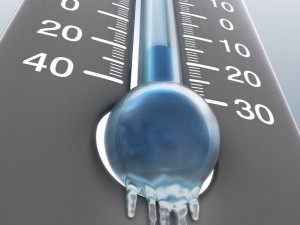I live in a part of the country where we take skiing pretty seriously.
It’s common for people to ski a few times a week since there are three great resorts right in our town.
Our family is no exception.
We ski a lot, but as my wife and I have gotten older, we discovered a painful reality:
Our feet get colder faster.
I convinced myself that cold feet were just part of the experience.
No pain, no gain, as the old saying goes.
My wife didn’t share that conviction.
We tried thicker socks for more insulation and thinner socks for better circulation.
Then we heard from friends about this little secret of modern technology: battery-powered boot heaters.
It sounds like the ultimate luxury, but friends who own them all say the same thing: “They will change your life.”
But here’s the problem.
They aren’t exactly cheap, so we (mostly me) would put off buying them.
Then the holidays rolled round, and Santa delivered some great snow.
We had a series of big storms in the local mountains, but it was cold.
So the topic of cold feet came up again.
Then I went skiing with a friend and his wife.
It was 9 degrees below zero when we got out of the car, and she had boot warmers.
Her toes were hot, she told me.
Mental note taken.
A few days later, I decided it was time to do something about my wife’s cold feet
The day after Christmas, I took her boots and a very generous gift card that a friend had given me to a local ski shop.
I told the salesman I wanted boot heaters installed.
He told me the price, and I agreed.
Fifteen minutes later, the boot heaters were fitted and I left.
As I drove home, I realized how refreshingly different this experience had been.
My normal pattern when it comes to spending money is to look at every option.
I read reviews, study alternatives and ultimately spend way too much time finding a way to save a bit of money.
I go through this process even when I have already decided I’ll make the purchase.
I’m also very aware that the time I spend over-analyzing prices will cost me way more money, in the form of opportunity costs and cognitive drain, than I could ever hope to save.
On top of all that, it’s painful.
I did the opposite with the boot heaters.
I decided that if my wife was going to enjoy skiing, she needed (yes, needed) boot heaters.
I had the money, so I bought them.
It was such a relief to make a decision without weighing 50 options, reading hundreds of testimonials or calling friends for recommendations
I knew what I wanted, and previous experience with the local shop gave me the confidence to trust I had made a good decision.
In a world with ever more choices, it’s easy to overlook the cost of making decisions, what researchers refer to as decision fatigue.
Each decision affects the one that follows.
A great example comes from a study The New York Times covered in 2011.
Jonathan Levav of Stanford and Shai Danziger of Ben-Gurion University reviewed 1,100 decisions made by an Israeli parole board.
Their analysis demonstrated that the time of day a case was heard played a role in the board’s decision.
After controlling for ethnicity, type of crime and sentence length, they found that “prisoners who appeared early in the morning received parole about 70 percent of the time, while those who appeared late in the day were paroled less than 10 percent of the time.”
As the article noted, “There was nothing malicious or even unusual” about the board’s behavior.
Over the course of a day, our brains start to take shortcuts, and the two most obvious results are acting recklessly and not acting at all
I have done both, particularly when it comes to prices.
In my situation, for instance, I know I might have paid less elsewhere for the boot warmers.
Normally, this possibility would have really bothered me.
But then I remembered the example of drivers who search all over town for the cheapest gas.
They might drive around for an hour but don’t think to do the math.
Saving 10 cents a gallon sounds great, until you multiply it by the 16-gallon tank typically found in a midsize car.
That is only $1.60 in savings. I suspect we all value an hour of our time at more than $1.60.
My boot warmer experience confirms a couple of valuable lessons.
- We need to accept that we can’t always make the best decisions, but we can make good ones. Generally, good decisions will make the most of our resources and free us to move on to other important things.
- We can automate some of our decisions to help counter decision fatigue. For instance, if you create a charitable giving plan that includes making a monthly contribution, set up an automatic payment for it. We don’t need to rethink good decisions every time. Once is enough.
Based on the lesson of the boot warmers, I have a new goal.
I want to become a more impulsive buyer.
Now, that goal comes with a very important caveat.
I need to already have the money and I need to have decided to spend it.
Every day we have to make what can seem to be an overwhelming number of decisions.
Almost all of them will be made without considering all the possible alternatives.
Knowing there is a cost to those decisions can help us weigh our options and then put them in context.
Sometimes, good really is good enough, and often, impulsiveness turns out to be a good investment.
This column originally appeared at the New York Times.




No comments:
Post a Comment